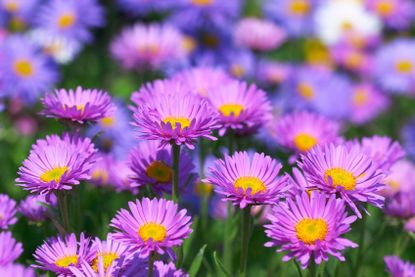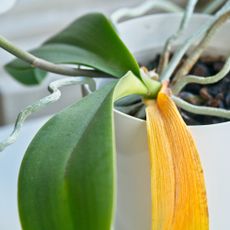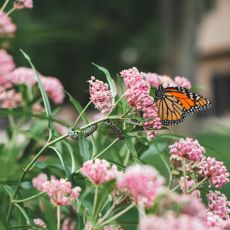How To Grow Beautiful Asters in Your Garden
Sweet, old-fashioned aster flowers will fill your garden spaces with color in late summer and fall, and their small daisy-like flowers are a perfect addition for beauty and pollinators.


Aster Flower Info - Caring For Asters
Asters are a lovely addition to ornamental gardens. There are more than 600 varieties in the aster family, the most common in shades of purple that look like little daisies. What is unique about this pretty perennial is that it tends to bloom profusely as the days of summer begin to shorten, when other garden flowers have already seen their better days. Asters are a favorite of gardeners, as well as grateful pollinators. Though the needs of annual and perennial types of aster vary slightly, most aster species are considered quite easy to grow and they can thrive under a wide range of conditions.
Quick Facts
- Botanical name: Aster
- Height: 1-6 ft. (0.3-1.8 m.)
- Spread: 1-3 ft. (0.3-1.0 m.)
- Sun exposure: Full Sun, Part Shade
- Soil requirement: Neutral, Well-Draining
- Hardiness zone: USDA Zones 4-8
- When to plan: Spring, Fall
Aster Care
Like little daisies, asters fill in and brighten up any space in the garden and can grow as tall as 6 feet (1.8 m), so plan ahead when you decide to plant these beauties. Their colors range from purple to sky blue, pink, and white. While generally easy to grow, they do have a few requirements to thrive. Here are the conditions under which asters are happiest.
- Light Asters require full sun to perform their best. This means that the plants should receive at least 6-8 hours of direct light each day. Where growing conditions are especially warm, asters may enjoy brief periods of shade during the hottest parts of the afternoon. Conversely, asters that receive too much shade may become leggy or fail to produce many blooms.
- Water. New aster plantings need consistent moisture during their first growing season but, once they’re established they can tolerate fairly dry conditions. This makes them an ideal candidate for use in wildflower gardens, pollinator gardens and naturalized beds. Even after they’re established, though, they may still need occasional water in regions that are hot or have prolonged periods of drought.
- Temperature & Humidity vAster flowers can tolerate a wide range of temperatures. With ideal moisture and humidity levels, most species are able to withstand even the warmest of summer temperatures. Within their hardiness range, these plants are seldom damaged by cold, but they may benefit from some added protection throughout winter.
- Soil Asters are highly adaptable to a wide range of soil conditions, including sandy or clay-heavy soil. But be sure the soil they’re planted in drains well to avoid losing the plants to root rot. If your soil is dense with clay, be sure to amend your planting areas for new asters. They like rich, well-amended soil but many perennial species can thrive in less-than-ideal soils or soil with poor fertility.
- Fertilizer Feed your asters beginning in spring, before the plants have started to produce buds. Use a balanced, slow-release feed. You can continue to feed them through the summer until the plants begin to bloom.
- Problems, Pests & Diseases Monitor your aster plants for diseases like aster yellows, blight, wilt, and powdery mildew, which are the most common ones. Proper watering techniques, adequate spacing, and good overall garden sanitation will help prevent them. Water them from ground level rather than from above. Asters may also be frequented occasionally by troublesome insects, such as aphids, mites, Japanese beetles, and thrips.
Pruning
How and when to prune aster plants depends on the species. However, most types benefit from routine deadheading of spent blooms. Perennial types can be pinched or cut back in midsummer to promote more flowers in fall. When cooler temperatures arrive, most asters will begin to die back naturally. At this time, dead and decaying plant matter should be snipped back to the soil level in preparation for spring.
Propagation
Most open-pollinated varieties of aster can be easily started from seed. Specialty types and hybrids can also be propagated by cuttings or by division to ensure that new plants are identical to the parent. Take small stem cuttings in late spring and root them for planting in early summer. Established plants can be divided any time that the aster is dormant, preferably in early spring as new growth emerges.
Repotting
Asters grown in containers should be repotted every 2-3 years. Established plants that have been recently divided can also be potted into their own containers before being moved to the garden. For potted asters, use a high-quality potting mix that drains well. To grow their best, new pots should be at least twice the height and twice the width of the root ball of each plant.
Varieties
Look for some of these popular aster plant varieties:
Coombe Fishacre Aster
Gardening tips, videos, info and more delivered right to your inbox!
Sign up for the Gardening Know How newsletter today and receive a free download of our most popular eBook "How to Grow Delicious Tomatoes."
Harringtons Pink Aster
Mrs. S.T. Wright Aster
October Skies Aster
Royal Ruby Aster

Tonya Barnett has been gardening for 13 years. Flowers are her passion. She has trasformed her backyard into a cut flower garden, which she regularly chronicles on her YouTube channel http://www.youtube.com/@tonyawiththeflowers.
- Caroline BloomfieldManager of Marketing Communications
-
 Orchid Leaves Turning Yellow: Common Causes And Remedies
Orchid Leaves Turning Yellow: Common Causes And RemediesYellow orchid leaves are a frequent cause of concern for indoor gardeners. Discover how to diagnose the issue, and restore your plant to full health.
By Melanie Griffiths
-
 Pollinator Garden Certification Guide: Turn Your Yard Into An Official Pollinator Preserve
Pollinator Garden Certification Guide: Turn Your Yard Into An Official Pollinator PreserveYou can get a pollinator garden certification by making your yard or garden a safe haven for pollinators with food, water and shelter.
By Mary Ellen Ellis